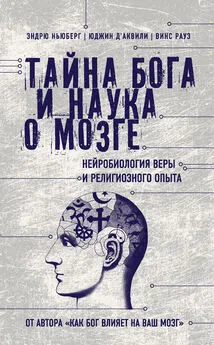Инна Воробей - Язык и мозг. Нейробиология раскрывает главную тайну человека
- Название:Язык и мозг. Нейробиология раскрывает главную тайну человека
- Автор:
- Жанр:
- Издательство:Array SelfPub.ru
- Год:2020
- ISBN:нет данных
- Рейтинг:
- Избранное:Добавить в избранное
-
Отзывы:
-
Ваша оценка:
Инна Воробей - Язык и мозг. Нейробиология раскрывает главную тайну человека краткое содержание
Язык и мозг. Нейробиология раскрывает главную тайну человека - читать онлайн бесплатно ознакомительный отрывок
Интервал:
Закладка:
10
Bear M.F., Connors B.W., Paradiso M.A. (2009). Neurowissenschaften: ein grundlegendes Lehrbuch für Biologie, Medizin und Psychologie. Heidelberg: Spektrum Akad. Verl. 980 S. – S. 107–110.
11
Azevedo F.A.C., Carvalho L.R.B., Grinberg L.T., Farfel J.M., Ferretti R.E.L., Leite R.E.P… Herculano-Houzel S. (2009). Equal numbers of neuronal and nonneuronal cells make the human brain an isometrically scaled-up primate brain. Journal of Comparative Neurology, 513(5), 532–541. https://doi.org/10.1002/cne.21974
12
Pulvermüler F. (2018). Neural reuse of action perception circuits for language, concepts and communication. Progress in Neurobiology. Elsevier Ltd. https://doi.org/10.1016/j.pneurobio.2017.07.001
13
https://loop.frontiersin.org/people/931/bio
14
Quian Quiroga R. & Kreiman G. (2010). Postscript: About Grandmother Cells and Jennifer Aniston Neurons. Psychological Review, 117(1), 297–299. https://doi.org/10.1037/0033-295X.117.1.297
15
The World Atlas of Language Structure Online. https://wals.info/chapter/2
16
The World Atlas of Language Structure Online. https://wals.info/chapter/1
17
https://en.wikipedia.org/wiki/David_Poeppel
18
https://www.mpg.de/8299802/empirische_aesthetik_poeppel
19
https://youtu.be/-1su5DWUYXo
20
Feng C., Yue Y. & Zhang Q. (2019). Syllables are Retrieved before Segments in the Spoken Production of Mandarin Chinese: An ERP Study. Scientific Reports, 9(1). https://doi.org/10.1038/s41598-019-48033-3
21
Pulvermüller F. & Fadiga L. (2015). Brain Language Mechanisms Built on Action and Perception. In Neurobiology of Language (pp. 311–324). Elsevier Inc. https://doi.org/10.1016/B978-0-12-407794-2.00026-2
22
Hernandez A. E. (2015). Bilingual Development and Age of Acquisition. In Neurobiology of Language (pp. 407–418). Elsevier Inc. https://doi.org/10.1016/B978-0-12-407794-2.00034-1
23
Pulvermüller F. (2003). The neuroscience of language: On brain circuits of words and serial order. Science News, 165(19), 291. https://doi.org/10.2307/4015149
24
Pulvermüller F. (2013, September). How neurons make meaning: Brain mechanisms for embodied and abstract-symbolic semantics. Trends in Cognitive Sciences. https://doi.org/10.1016/j.tics.2013.06.004
25
Личная беседа, март 2018.
26
https://www.hanser-literaturverlage.de/autor/gregory-hickok/
27
Hickok G. & Poeppel D. (2007, May). The cortical organization of speech processing. Nature Reviews Neuroscience. https://doi.org/10.1038/nrn2113
28
https://en.wikipedia.org/wiki/Angela_D._Friederici
29
Friederici A.D. & Chomsky N. (2017). Language in our brain: The origins of a uniquely human capacity. Language in Our Brain: The Origins of a Uniquely Human Capacity (pp. 1¨C284). The MIT Press.
30
Mäß B., Friederici A.D., Damian M., Meyer A.S. & Levelt W.J.M. (2002). Semantic category interference in overt picture naming: Sharpening current density localization by PCA. Journal of Cognitive Neuroscience, 14(3), 455–462. https://doi.org/10.1162/089892902317361967
31
Friederici A.D. & Chomsky N. (2017). Language in our brain: The origins of a uniquely human capacity. Language in Our Brain: The Origins of a Uniquely Human Capacity (pp. 1-284). The MIT Press.
32
Kemmerer D. (2014). Cognitive Neuroscience of Language. Cognitive Neuroscience of Language. Psychology Press. https://doi.org/10.4324/9781315764061
33
Garrett, Merrill F. Spech errors, Psycholgy of Elsevier Ltd, 2015 International Encyclopedia of the Social & Behavioral Sciences. Pp. 229–234.
34
Fromkin V., Krashen S., Curtiss S., Rigler D. & Rigler M. (1974). The development of language in genie: a case of language acquisition beyond the «critical period». Brain and Language, 1(1), 81—107. https://doi.org/10.1016/0093-934X(74)90027-3
35
Mollica F. & Piantadosi S.T. (2019). Humans store about 1.5 megabytes of information during language acquisition. Royal Society Open Science, 6(3). https://doi.org/10.1098/rsos.181393
36
Kuhl P.K. (2004). Early language acquisition: cracking the speech code. Nature Reviews Neuroscience, 5(11), 831–843. doi:10.1038/nrn1533
37
Beauchemin M., Gonzalez-Frankenberger B., Tremblay J., Vannasing P., Martinez-Montes E., Belin P., …Lassonde M. (2010). Mother and Stranger: An Electrophysiological Study of Voice Processing in Newborns. Cerebral Cortex, 21(8), 1705–1711. doi:10.1093/cercor/bhq242
38
Mampe B., Friederici A.D., Christophe A. & Wermke K. (2009). Newborns’ Cry Melody Is Shaped by Their Native Language. Current Biology, 19(23), 1994–1997. doi:10.1016/j.cub.2009.09.064
39
Bruderer, A. G., Kyle Danielson, D., Kandhadai, P., & Werker, J. F. (2015). Sensorimotor influences on speech perception in infancy. Proceedings of the National Academy of Sciences of the United States of America, 112(44), 13531—13536. https://doi.org/10.1073/pnas.1508631112
40
Friederici, A. D., Friedrich, M., & Christophe, A. (2007). Brain Responses in 4-Month-Old Infant Are Already Language Specific. Current Biology, 17(14), 1208–1211. https://doi.org/10.1016/j.cub.2007.06.011
41
Jusczyk P.W., Houston D.M. & Newsome M. (1999). The Beginnings of Word Segmentation in English-Learning Infants. Cognitive Psychology, 39(3–4), 159–207. https://doi.org/10.1006/cogp.1999.0716
42
Kuhl, P. K. (2004, November). Early language acquisition: Cracking the speech code. Nature Reviews Neuroscience. https://doi.org/10.1038/nrn1533
43
Piazza, E. A., Iordan, M. C., & Lew-Williams, C. (2017). Mothers Consistently Alter Their Unique Vocal Fingerprints When Communicating with Infants. Current Biology, 27(20), 3162–3167.e3. https://doi.org/10.1016/j.cub.2017.08.074
44
Jakobson R. (1962) Why 'mama' and 'papa'? // Jakobson, R. Selected Writings, Vol. I: Phonological Studies, Pp. 538–545. The Hague: Mouton.
45
Friederici A.D. & Chomsky N. (2017). Language in our brain: The origins of a uniquely human capacity. Language in Our Brain: The Origins of a Uniquely Human Capacity (pp. 1—284). The MIT Press.
46
Pace A., Luo R., Hirsh-Pasek K. & Golinkoff R.M. (2017). Identifying Pathways Between Socioeconomic Status and Language Development. Annual Review of Linguistics, 3(1), 285–308. https://doi.org/10.1146/annurev-linguistics-011516-034226
47
McGillion, M., Pine, J. M., Herbert, J. S., & Matthews, D. (2017). A randomised controlled trial to test the effect of promoting caregiver contingent talk on language development in infants from diverse socioeconomic status backgrounds. Journal of Child Psychology and Psychiatry and Allied Disciplines, 58(10), 1122–1131. https://doi.org/10.1111/jcpp.12725
48
Romeo R.R., Leonard J.A., Robinson S.T., West M.R., Mackey A.P., Rowe M.L. & Gabrieli J.D.E. (2018). Beyond the 30-Million-Word Gap: Children’s Conversational Exposure Is Associated With Language-Related Brain Function. Psychological Science, 29(5), 700–710. https://doi.org/10.1177/0956797617742725
49
https://kathyhirshpasek.com/language/
50
На вопросы центра ответили по телефону 1600 человек из разных регионов России.
51
https://wciom.ru/index.php?id=236&uid=9924
52
https://wciom.ru/index.php?id=236&uid=672
53
К сожалению, в опросе 2014 года такой вопрос не задавали. Поэтому мы не узнаем, изменилось ли число людей, владеющих свободно иностранными языками.
54
Murakami H. Vom Beruf Schriftsteller. Btb-Verlag, 2018. S. 152–153 (Перевод с немецкого мой. – И. В.).
55
https://wciom.ru/index.php?id=236&uid=9924
56
https://www.humboldt-professur.de/en/preistraeger/preistraeger-2011/clahsen-harald
57
https://www.francoisgrosjean.ch/myths_en.html
58
Hernandez A.E. (2015). Bilingual Development and Age of Acquisition. In Neurobiology of Language (pp. 407–418). Elsevier Inc. https://doi.org/10.1016/B978-0-12-407794-2.00034-1
59
Stein M., Federspiel A., Koenig T., Wirth M., Lehmann C., Wiest R., … Dierks T. (2009). Reduced frontal activation with increasing 2nd language proficiency. Neuropsychologia, 47(13), 2712–2720. https://doi.org/10.1016/j.neuropsychologia.2009.05.023
60
Renner F., Kersbergen I., Field M. & Werthmann J. (2018). Dutch courage? Effects of acute alcohol consumption on self-ratings and observer ratings of foreign language skills. Journal of Psychopharmacology, 32(1), 116–122. https://doi.org/10.1177/0269881117735687
61
Guiora A.Z., Acton W.R., Erard R. & Strickland F.W. (1980). The effects of benzodiazepine (valium) on permeability of language ego boundaries. Language Learning, 30(2), 351–361. https://doi.org/10.1111/j.1467–1770.1980.tb00323.x
62
Beschin N., de Bruin A. & Della Sala S. (2016, August 1). Compulsive foreign language syndrome: A clinical observation not a mystery. Cortex. Masson SpA. https://doi.org/10.1016/j.cortex.2016.04.020
63
Моисеенко А. Наташа Бекетова говорит на 120 языках // Комсомольская правда. 2003. 24 марта. https://www.ugra.kp.ru/daily/23021/3332/
64
Klein D., Mok K., Chen J.K. & Watkins K.E. (2014). Age of language learning shapes brain structure: A cortical thickness study of bilingual and monolingual individuals. Brain and Language, 131, 20–24. https://doi.org/10.1016/j.bandl.2013.05.014
65
Mårtensson J., Eriksson J., Bodammer N.C., Lindgren M., Johansson M., Nyberg L. & Lövdén M. (2012). Growth of language-related brain areas after foreign language learning. NeuroImage, 63(1), 240–244. https://doi.org/10.1016/j.neuroimage.2012.06.043
66
Pliatsikas C., Johnstone T. & Marinis T. (2014). Grey matter volume in the cerebellum is related to the processing of grammatical rules in a second language: A structural voxel-based morphometry study. Cerebellum, 13(1), 55–63. https://doi.org/10.1007/s12311-013-0515-6
67
Pliatsikas C., DeLuca V., Moschopoulou E. & Saddy J.D. (2017). Immersive bilingualism reshapes the core of the brain. Brain Structure and Function, 222(4), 1785–1795. https://doi.org/10.1007/s00429-016-1307-9
Читать дальшеИнтервал:
Закладка:
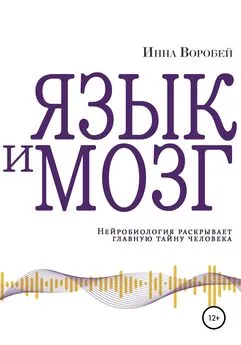

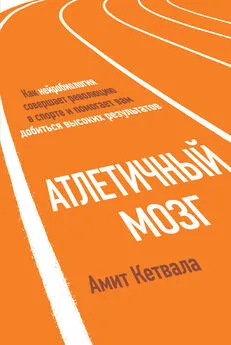
![Дмитрий Филиппов - Вскрытие мозга [Нейробиология психических расстройств]](/books/1067571/dmitrij-filippov-vskrytie-mozga-nejrobiologiya-psi.webp)
![Коллектив авторов - Мозг и сознание [Разгадка величайшей тайны человеческого мозга] [litres]](/books/1075092/kollektiv-avtorov-mozg-i-soznanie-razgadka-velicha.webp)
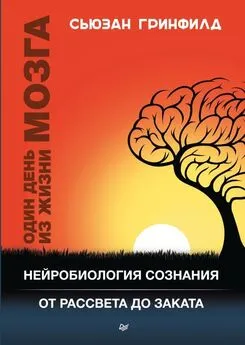
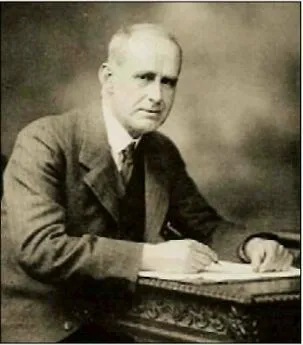
![Амит Кетвала - Атлетичный мозг [Как нейробиология совершает революцию в спорте и помогает вам добиться высоких результатов]](/books/1101771/amit-ketvala-atletichnyj-mozg-kak-nejrobiologiya-so.webp)
